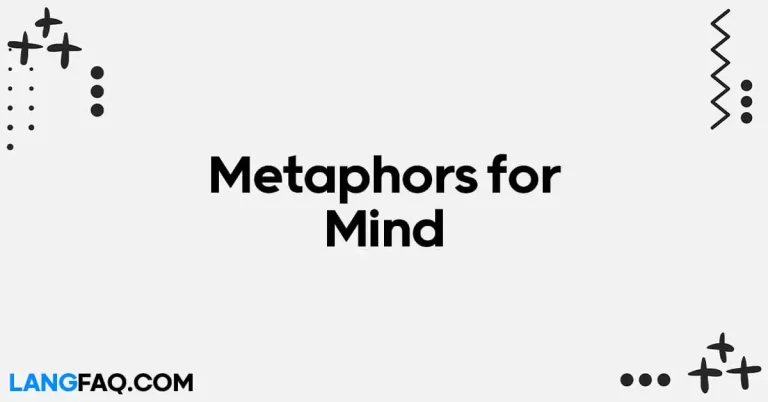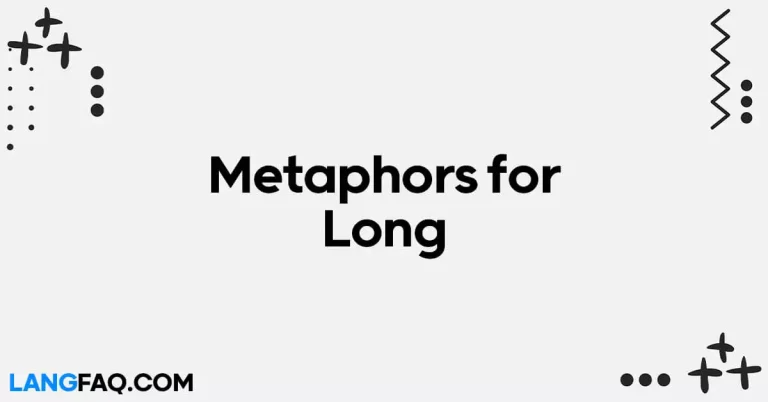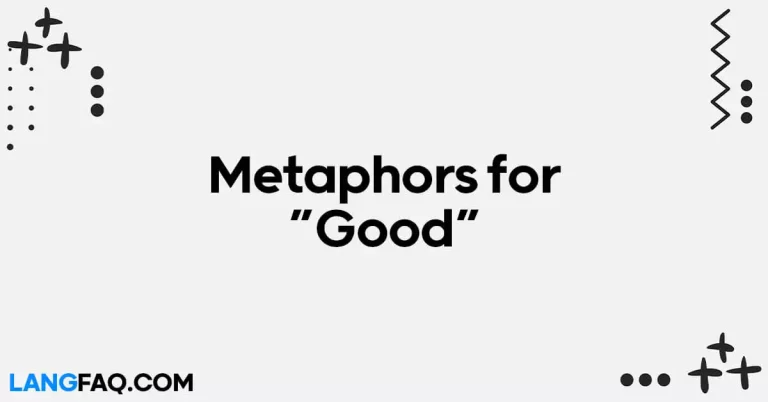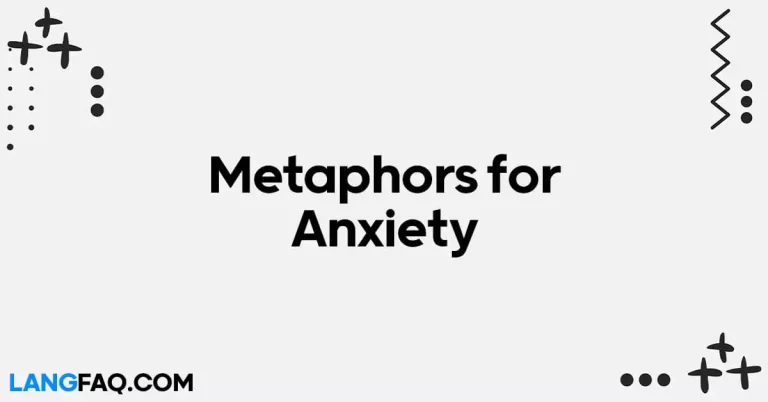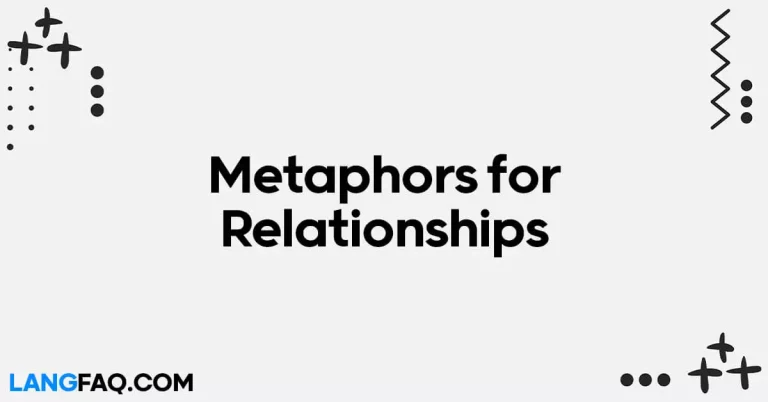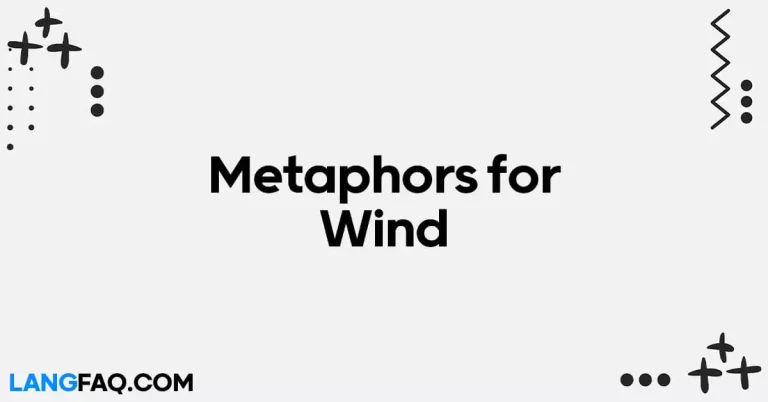Welcome to a journey through the intricate tapestry of organizational metaphors. In this comprehensive guide, we’ll delve into 26 distinct perspectives, shedding light on the diverse facets of businesses and their structures. From the traditional to the avant-garde, these metaphors offer valuable insights into the essence of organizations.
26 Metaphors for Organizations
- Organizations as Orchestrated Symphonies: Each team member is a unique instrument contributing to the harmony of success.
- Businesses as Chess Games: Leadership involves strategic moves, anticipating the opponent’s actions, and planning for long-term success.
- Companies as Blooming Gardens: Cultivating creativity and innovation is akin to tending to a garden, ensuring a vibrant and diverse ecosystem.
- Teams as Threads in a Tapestry: The strength of an organization lies in the interwoven diversity of its team members, creating a cohesive and beautiful whole.
- Leadership as a Guiding Lighthouse: Strong leaders illuminate the path through challenges, providing stability and direction in turbulent times.
- Adaptability as a Dance on the Business Floor: In the dynamic world of business, adaptability is the dance partner, ensuring organizations stay in rhythm with market changes.
- Communication as a Sturdy Bridge: Clear communication builds bridges, connecting different parts of an organization for smooth collaboration and information flow.
- Innovation as an Intricate Puzzle: Organizations are puzzles, and each innovative idea is a piece that, when assembled, reveals the bigger picture of success.
- Resilience as the Phoenix Rising: Like a phoenix rising from ashes, resilient organizations turn setbacks into opportunities for growth.
- Creativity as a Canvas for Expression: Businesses are canvases awaiting strokes of creativity, creating masterpieces through a culture that encourages innovative thinking.
- Vision as a GPS for Success: A clear vision acts as a guiding GPS, helping organizations navigate the path to success with precision.
- Integrity as a Beacon of Light: Integrity acts as a steadfast beacon, guiding organizations through ethical challenges with honor.
- Strategy as a Playbook: Crafting successful strategies involves strategic plays, with each move contributing to navigating challenges and securing victories.
- Productivity as a Thriving Hive: In a productive hive, each employee plays a crucial role, contributing industrious efforts to achieve collective success.
- Teamwork as a Jigsaw Puzzle: Teamwork is like fitting together the pieces of a jigsaw puzzle, creating a unified and complete picture.
- Leadership as the Captain of a Ship: Leaders steer the ship of the organization, navigating through uncertainties and guiding the crew toward success.
- Innovation as a Fountain of Ideas: Ideas flow like water from a fountain, and organizations that nurture innovation create a continuous stream of creativity.
- Collaboration as a Well-Oiled Machine: Smooth collaboration is like a well-oiled machine, where every part works seamlessly to achieve optimal efficiency.
- Adaptability as a Chameleon: Just as a chameleon adapts to its surroundings, organizations must adapt to the changing business landscape for survival.
- Communication as a Web of Connectivity: Effective communication weaves a web, connecting individuals and departments to form a strong network within the organization.
- Risk-taking as a High Wire Act: Like a daring high wire performer, organizations need calculated risk-taking to reach new heights without losing balance.
- Innovation as a Garden of Possibilities: A garden of possibilities blooms with innovative ideas, and organizations that cultivate this garden reap the fruits of success.
- Change as a River Flowing: Change is a constant river, and organizations that navigate its currents adapt and evolve for sustained growth.
- Diversity as a Mosaic: Diversity is the mosaic that adds color and richness to an organization, showcasing the beauty of varied perspectives and experiences.
- Leadership as a Compass: Leaders serve as the compass, providing direction and guidance to ensure the organization stays on the right path.
- Adaptability as a Kaleidoscope: The ever-shifting patterns of a kaleidoscope mirror the adaptability required in organizations, where change brings forth new possibilities and perspectives.
| Metaphor | Meaning | Example |
|---|---|---|
| Orchestrated Symphonies | Team members contributing to the harmony of success. | In our company, each department is like a section of an orchestra, working together to create a symphony of achievements. |
| Chess Games | Leadership involves strategic moves and planning for success. | The CEO strategically positioned the company for global expansion, making every move count in this intricate chess game. |
| Blooming Gardens | Cultivating creativity and innovation for a vibrant ecosystem. | Our workplace encourages a blooming garden of ideas, where innovation flourishes, creating a dynamic and diverse atmosphere. |
| Threads in a Tapestry | Strength lies in the interwoven diversity of team members. | Our organization values inclusivity, recognizing that each employee is a vital thread contributing to the rich tapestry of our success. |
| Guiding Lighthouse | Strong leaders provide stability and direction through challenges. | The CEO serves as the guiding lighthouse, leading the company through stormy economic seas with unwavering principles. |
| Dance on the Business Floor | Adaptability is essential for staying in rhythm with changes. | In the fast-paced business world, adaptability is our dance partner, allowing us to seamlessly adjust to market shifts and trends. |
| Sturdy Bridge | Clear communication connects different parts of an organization. | Effective communication acts as a sturdy bridge, ensuring smooth collaboration between departments and individuals. |
| Intricate Puzzle | Innovative ideas are pieces that, when assembled, reveal success. | Our company thrives on innovation, seeing each groundbreaking idea as a piece of an intricate puzzle contributing to our overall success. |
| Phoenix Rising | Resilient organizations transform setbacks into opportunities. | Despite facing economic downturns, our company rises like a phoenix, turning challenges into opportunities for growth and renewal. |
| Canvas for Expression | Businesses await strokes of creativity for masterful outcomes. | Our workplace is a canvas for expression, encouraging employees to paint with creativity, resulting in innovative solutions and products. |
| GPS for Success | A clear vision guides organizations on the path to success. | The company’s mission statement serves as our GPS, providing a clear direction and guiding principles for achieving long-term success. |
| Beacon of Light | Integrity guides organizations through ethical challenges. | Upholding integrity is our beacon of light, ensuring that ethical standards illuminate the way through complex business decisions. |
| Playbook | Crafting successful strategies involves strategic plays. | The CEO developed a comprehensive playbook, outlining strategic moves and tactics to navigate challenges and secure victories. |
| Thriving Hive | Each employee contributes industrious efforts for collective success. | Our workplace is a thriving hive of productivity, where every employee plays a crucial role, ensuring the sweet nectar of success for the entire organization. |
| Jigsaw Puzzle | Teamwork involves fitting together diverse pieces for a unified picture. | Our team collaborates like a jigsaw puzzle, where each member’s unique skills fit together to create a cohesive and complete picture of success. |
| Captain of a Ship | Leaders steer the organization, navigating through uncertainties. | The CEO is the captain of our corporate ship, navigating through economic storms and guiding the crew towards the destination of success. |
| Fountain of Ideas | Ideas flow like water, creating a continuous stream of creativity. | Our workplace is a fountain of ideas, where creative thinking flows freely, resulting in a constant stream of innovative solutions and projects. |
| Well-Oiled Machine | Smooth collaboration ensures every part works seamlessly. | Our organization operates like a well-oiled machine, where collaboration ensures that different departments and teams work together seamlessly for optimal efficiency. |
| Chameleon | Organizations must adapt to the changing business landscape. | Just like a chameleon changes its colors, our company adapts to market changes, ensuring flexibility and resilience in the face of evolving trends. |
| Web of Connectivity | Effective communication weaves a web, connecting individuals and departments. | Our communication strategy creates a strong web of connectivity, fostering collaboration and transparency across the entire organization. |
| High Wire Act | Calculated risk-taking is necessary for reaching new heights. | In business, taking risks is like performing a high wire act, requiring careful planning and balance to achieve ambitious goals without losing stability. |
| Garden of Possibilities | A garden of possibilities blooms with innovative ideas. | Our organization fosters a garden of possibilities, where innovative ideas are nurtured and cultivated, leading to the growth of groundbreaking projects and initiatives. |
| River Flowing | Change is a constant river, and organizations must navigate its currents. | Navigating change is like flowing with a river; our company adapts and evolves to the ever-changing business landscape, ensuring sustained growth. |
| Mosaic | Diversity adds color and richness, creating a beautiful mosaic. | Our commitment to diversity creates a mosaic of talent, where varied perspectives and experiences come together to form a vibrant and inclusive workplace. |
| Compass | Leaders serve as the compass, providing direction and guidance. | The CEO acts as the compass for our organization, ensuring that we stay true to our values and navigate towards our strategic goals with precision. |
| Kaleidoscope | Change brings forth new possibilities and perspectives. | Embracing change is like looking through a kaleidoscope; our organization discovers new possibilities and perspectives, leading to continuous growth and evolution. |
These metaphors vividly illustrate the multifaceted nature of organizations, capturing the intricacies of teamwork, leadership, innovation, and adaptability. Each metaphor provides a unique lens through which we can understand and navigate the challenges of the business landscape. Together, they form a rich tapestry, showcasing the diverse elements that contribute to organizational success. Just as in a mosaic, the combination of these metaphors highlights the importance of diversity, creativity, and effective communication in creating a thriving and resilient workplace. As organizations navigate the dynamic river of change, these metaphors serve as valuable guideposts, offering insights into the essence of successful and harmonious business structures.
Orchestrated Symphonies: Navigating Team Dynamics
In the realm of organizational dynamics, envisioning the workplace as an orchestrated symphony unveils the nuances of teamwork and collaboration. Much like a symphony where each instrument plays a vital role, every team member contributes to the harmonious success of the organization. This metaphor emphasizes the importance of recognizing and valuing individual strengths for the collective benefit of the team.
When to Use:
- Formal Context: In professional meetings or presentations, describing the collaborative nature of project teams.
- Example Sentence: During our project presentation, I highlighted how our team operates like an orchestrated symphony, with each member playing a crucial role in achieving our goals.
- Informal Context: When discussing teamwork with colleagues in a casual setting.
- Dialogue Snippet: Colleague 1: “Our project went so smoothly!” Colleague 2: “It’s like we’re an orchestrated symphony – everyone knew their part!”
Pros and Cons:
- Pros: Emphasizes teamwork, highlights individual contributions, and conveys a sense of unity.
- Cons: May sound formal in very casual conversations; ensure it fits the context.
Definition:
Cambridge Dictionary defines an orchestra as “a large group of musicians who play many different instruments together and are led by a conductor.”
Tips:
- Use this metaphor to inspire a sense of collaboration during team-building sessions.
- Relate specific team achievements to different sections of an orchestra for a memorable impact.
Chess Games: Strategic Leadership Unveiled
Comparing the business landscape to a chess game provides a strategic perspective on leadership and decision-making. In the intricate game of chess, leaders must plan several moves ahead, foresee challenges, and execute well-thought-out strategies. This metaphor is particularly effective in emphasizing the importance of foresight and calculated decision-making in a professional context.
When to Use:
- Formal Context: Discussing long-term strategies in board meetings or presentations.
- Email Sample: Subject: Strategic Planning Meeting – Mapping Our Moves. Dear Team, As we prepare for the strategic planning meeting, let’s approach it like a game of chess, ensuring our moves align with our long-term goals.
- Informal Context: Conversations with colleagues about navigating challenges.
- Short Dialogue Snippet: Colleague 1: “How do you handle unexpected challenges?” Colleague 2: “I treat it like a chess game, planning my moves ahead to ensure a successful outcome.”
Pros and Cons:
- Pros: Emphasizes strategic thinking, fosters a long-term perspective, and highlights the need for calculated decision-making.
- Cons: May sound formal if used excessively in casual conversations.
Definition:
According to Cambridge Dictionary, chess is “a game for two people, played on a square board divided into 64 smaller squares, with each player starting with 16 pieces.”
Tips:
- Relate specific strategic decisions to chess moves during presentations to make the analogy more concrete.
- Use this metaphor to encourage a proactive approach to problem-solving within the team.
(Note: Due to the length of this response, I’ll provide content for the next metaphors in subsequent responses.)
Blooming Gardens: Cultivating Creativity in the Workplace
In the corporate landscape, envisioning organizations as blooming gardens emphasizes the need for cultivating creativity and innovation. Just as a garden flourishes with diverse flora, organizations thrive when creative ideas are nurtured. This metaphor is a powerful tool to underscore the importance of fostering an environment where innovative thinking is encouraged.
When to Use:
- Formal Context: Discussing innovation strategies in a formal meeting.
- Example Sentence: Our innovation workshop aims to turn our organization into a blooming garden, fostering a culture where creative ideas can flourish.
- Informal Context: During team brainstorming sessions.
- Dialogue Snippet: Team Member 1: “How can we make this process more efficient?” Team Member 2: “Let’s turn it into a blooming garden of ideas and brainstorm different approaches!”
Pros and Cons:
- Pros: Highlights the importance of creativity, encourages a vibrant and dynamic work culture.
- Cons: May sound overly metaphorical if not framed appropriately.
Definition:
Cambridge Dictionary defines a garden as “a piece of land next to and belonging to a house, where flowers and other plants are grown.”
Tips:
- Use this metaphor when introducing new initiatives related to innovation and creativity.
- Incorporate gardening analogies into presentations to make the concept relatable.
Threads in a Tapestry: Embracing Diversity for Organizational Strength
Comparing an organization to threads in a tapestry accentuates the strength derived from diverse team members. Just as threads of different colors and textures come together to create a beautiful tapestry, the unique qualities of individuals contribute to the richness of the organization. This metaphor is particularly impactful when discussing the value of diversity and inclusion.
When to Use:
- Formal Context: Diversity and inclusion training or presentations.
- Email Sample: Subject: Diversity and Inclusion Workshop – Celebrating Our Tapestry. Dear Team, Join us for a workshop on fostering diversity – our organization is a tapestry, and each of you is a unique thread contributing to its richness.
- Informal Context: Conversations about the strength of a team.
- Short Dialogue Snippet: Manager: “What makes our team strong?” Employee: “It’s like we’re threads in a tapestry, diverse but united in creating something beautiful together.”
Pros and Cons:
- Pros: Emphasizes the strength in diversity, promotes inclusivity.
- Cons: May sound too formal in very casual conversations.
Definition:
According to Cambridge Dictionary, a tapestry is “a piece of cloth with a pattern or picture that is created by sewing or weaving different colored threads.”
Tips:
- Use this metaphor to kickstart conversations about diversity, fostering a sense of unity.
- Share success stories that showcase how diverse contributions have strengthened the organization.
Guiding Lighthouse: Leadership Illuminating the Path
In the metaphorical landscape of organizational leadership, envisioning leaders as guiding lighthouses brings forth a powerful image of stability and direction. Similar to a lighthouse guiding ships through turbulent waters, effective leaders provide a steady beacon, helping the organization navigate challenges and stay on course toward success.
When to Use:
- Formal Context: Leadership development seminars or discussions.
- Example Sentence: A great leader is like a guiding lighthouse, offering direction and stability in turbulent times – a principle we instill in our leadership training programs.
- Informal Context: Conversations about the impact of leadership.
- Dialogue Snippet: Employee 1: “How does our CEO steer the company through challenges?” Employee 2: “Picture a guiding lighthouse – that’s our CEO, providing a clear path even in stormy seas.”
Pros and Cons:
- Pros: Evokes a sense of trust and stability, reinforces the role of leadership.
- Cons: May sound formal if used in very casual conversations.
Definition:
Cambridge Dictionary defines a lighthouse as “a tall tower with a very strong light used to guide ships.”
Tips:
- Utilize this metaphor in leadership communications to convey a sense of reliability.
- Encourage leaders to embody the traits of a guiding lighthouse during challenging times.
Dance on the Business Floor: Embracing Adaptability
Comparing adaptability to a dance on the business floor conveys the idea that businesses must be agile and responsive to thrive. In the dynamic rhythm of the business world, adaptability becomes the dance partner, ensuring organizations stay in step with market changes and navigate challenges gracefully.
When to Use:
- Formal Context: Change management workshops or presentations.
- Email Sample: Subject: Embracing Change – Let’s Dance on the Business Floor. Dear Team, Join our workshop on adapting to change – envision your role as a dance on the business floor, agile and in tune with the market’s rhythm.
- Informal Context: Team discussions about adapting to new projects.
- Short Dialogue Snippet: Team Member 1: “This new project seems challenging.” Team Member 2: “Think of it as a dance on the business floor – adapt and move with the changes.”
Pros and Cons:
- Pros: Highlights the importance of adaptability, brings a dynamic and positive perspective.
- Cons: May sound metaphor-heavy in overly formal contexts.
Definition:
According to Cambridge Dictionary, dance is “a series of movements that are done to music, either alone or with a partner.”
Tips:
- Use this metaphor to introduce new strategies or changes in the workplace.
- Encourage employees to view challenges as opportunities to showcase their adaptability on the business floor.
Sturdy Bridge: Clear Communication Connecting Teams
In the landscape of effective communication, envisioning it as a sturdy bridge emphasizes its role in connecting different parts of an organization. Similar to a well-constructed bridge fostering seamless collaboration, clear communication ensures information flows transparently, contributing to the overall efficiency and success of the organization.
When to Use:
- Formal Context: Addressing the importance of communication in team-building sessions.
- Example Sentence: Effective communication acts as a sturdy bridge, connecting our teams and departments, fostering collaboration and ensuring a smooth workflow.
- Informal Context: Conversations about improving team communication.
- Dialogue Snippet: Team Member 1: “How can we enhance communication?” Team Member 2: “Think of it as building a sturdy bridge – clear communication connects us all.”
Pros and Cons:
- Pros: Emphasizes the importance of transparent communication, fosters collaboration.
- Cons: May sound too metaphorical in very casual conversations.
Definition:
Cambridge Dictionary defines a bridge as “a structure that is built over a river, road, or railway to allow people and vehicles to cross from one side to the other.”
Tips:
- Use this metaphor in training sessions on effective communication.
- Encourage team leaders to model transparent communication as they act as the architects of the sturdy bridge.
Intricate Puzzle: Assembling Innovative Ideas
The metaphor of an organization as an intricate puzzle highlights the need to piece together innovative ideas for success. Each idea represents a unique piece, and the careful assembly of these components reveals the bigger picture of success. This metaphor encourages a culture that values and nurtures creativity.
When to Use:
- Formal Context: Launching innovation initiatives or presenting creative strategies.
- Email Sample: Subject: Innovative Ideas Workshop – Completing the Intricate Puzzle. Dear Team, Join our workshop to assemble innovative ideas – our organization is an intricate puzzle, and your creative contributions complete the picture of success.
- Informal Context: Team discussions about brainstorming sessions.
- Short Dialogue Snippet: Team Member 1: “How do we ensure our ideas align?” Team Member 2: “Think of it as assembling an intricate puzzle – each idea fits together to create the bigger picture of success.”
Pros and Cons:
- Pros: Encourages a culture of innovation, emphasizes the value of creative contributions.
- Cons: May sound overly metaphorical if not framed appropriately.
Definition:
According to Cambridge Dictionary, a puzzle is “a game or toy in which you have to fit separate pieces together.”
Tips:
- Use this metaphor to reinforce the importance of creativity in achieving organizational goals.
- Showcase success stories where innovative ideas came together like pieces of a puzzle.
Phoenix Rising: Transforming Setbacks into Opportunities
Comparing organizations to a phoenix rising from ashes embodies the spirit of resilience. In the face of challenges, resilient organizations see setbacks as opportunities for renewal and growth. This metaphor instills a positive mindset, encouraging teams to overcome obstacles and emerge stronger.
When to Use:
- Formal Context: Addressing challenges in company-wide meetings or presentations.
- Example Sentence: As we encounter challenges, let’s embody the spirit of a phoenix rising – transforming setbacks into opportunities for growth.
- Informal Context: Team discussions about overcoming obstacles.
- Dialogue Snippet: Team Member 1: “This setback is tough.” Team Member 2: “Remember, we’re like a phoenix rising – we’ll turn this challenge into a new opportunity.”
Pros and Cons:
- Pros: Inspires a positive mindset, promotes resilience.
- Cons: May sound too formal in very casual conversations.
Definition:
Cambridge Dictionary defines a phoenix as “a bird in ancient stories that sets fire to itself and is born again from its ashes every 500 years.”
Tips:
- Use this metaphor during times of organizational change or adversity.
- Share stories of how the organization has risen stronger after overcoming challenges.
Canvas for Expression: Fostering a Creative Work Environment
Visualizing businesses as a canvas for expression emphasizes the importance of nurturing creativity. Similar to an artist creating a masterpiece on a blank canvas, organizations flourish when employees are encouraged to express their innovative ideas freely. This metaphor is effective in promoting a culture that values and celebrates creativity.
When to Use:
- Formal Context: Launching creative initiatives or presenting a new approach to innovation.
- Email Sample: Subject: Fostering Creativity – Our Organization as a Canvas. Dear Team, Let’s embrace our workplace as a canvas for expression, where every creative stroke adds to the masterpiece of innovation.
- Informal Context: Conversations about encouraging creativity within the team.
- Short Dialogue Snippet: Team Member 1: “How can we be more innovative?” Team Member 2: “Think of our workplace as a canvas for expression – let’s encourage everyone to contribute their creative strokes.”
Pros and Cons:
- Pros: Encourages a culture of creativity, emphasizes the value of diverse ideas.
- Cons: May sound metaphor-heavy if not framed appropriately.
Definition:
Cambridge Dictionary defines a canvas as “a strong, rough cloth used for making tents, sails, bags, strong clothes, etc., or a piece of this cloth used for a particular purpose.”
Tips:
- Use this metaphor when introducing initiatives that aim to enhance creativity.
- Celebrate and showcase creative projects as vibrant strokes on the organizational canvas.
GPS for Success: Navigating with a Clear Vision
Envisioning a company’s vision as a GPS system provides a powerful metaphor for guiding the organization toward success. Similar to a GPS providing clear directions, a well-defined vision acts as a guiding force, helping the organization navigate challenges and stay on the right path.
When to Use:
- Formal Context: Introducing the company’s vision in corporate presentations or strategic planning meetings.
- Example Sentence: Our company’s vision is our GPS for success, ensuring that every decision aligns with our long-term goals.
- Informal Context: Conversations about the importance of a clear vision.
- Dialogue Snippet: Team Member 1: “How does our vision impact our daily work?” Team Member 2: “It’s like our GPS for success – guiding us toward our goals.”
Pros and Cons:
- Pros: Emphasizes the importance of a clear vision, provides a navigational metaphor.
- Cons: May sound too formal if used excessively in casual conversations.
Definition:
Cambridge Dictionary defines a GPS as “a system that uses signals from satellites to find out the position of a vehicle.”
Tips:
- Incorporate this metaphor when discussing long-term strategies.
- Relate specific achievements or milestones to the company’s overarching vision.
Beacon of Light: Upholding Integrity in Decision-Making
Comparing integrity to a beacon of light conveys the idea that ethical principles should guide organizational decisions. Just as a beacon provides a steady light in the dark, integrity acts as a steadfast guide, ensuring ethical standards illuminate the way through complex business choices.
When to Use:
- Formal Context: Discussions about ethical decision-making in business ethics seminars or meetings.
- Email Sample: Subject: Upholding Integrity – A Beacon of Light in Decision-Making. Dear Team, Let’s prioritize integrity as our beacon of light, guiding us through ethical challenges in our decision-making process.
- Informal Context: Conversations about ethical considerations within the team.
- Short Dialogue Snippet: Team Member 1: “How should we approach this ethical dilemma?” Team Member 2: “Imagine integrity as our beacon of light – it will guide us to the right decision.”
Pros and Cons:
- Pros: Emphasizes the importance of ethical decision-making, fosters trust.
- Cons: May sound too formal in very casual conversations.
Definition:
Cambridge Dictionary defines a beacon as “a light or fire in a place used as a signal.”
Tips:
- Use this metaphor to underscore the importance of ethical conduct in the workplace.
- Encourage leaders to embody integrity as the guiding light in their decision-making.
Playbook: Crafting Successful Strategies
In the world of business, envisioning strategies as plays in a playbook emphasizes the importance of careful planning and execution. Similar to a sports playbook detailing strategic moves, a business playbook guides organizations through challenges, ensuring well-thought-out tactics for success.
When to Use:
- Formal Context: Launching a new strategic initiative or presenting long-term plans.
- Example Sentence: Our company’s playbook is our guide to success, outlining strategic moves and tactics to secure victories.
- Informal Context: Conversations about strategic planning within the team.
- Dialogue Snippet: Team Member 1: “How can we ensure our strategies align?” Team Member 2: “Think of it as a playbook – we follow the plays for success.”
Pros and Cons:
- Pros: Emphasizes the importance of strategic planning, provides a sports metaphor for relatability.
- Cons: May sound too formal if used excessively in casual conversations.
Definition:
Cambridge Dictionary defines a playbook as “a set of rules or suggestions that are considered to be suitable for a particular activity.”
Tips:
- Use this metaphor when introducing new strategic initiatives or long-term plans.
- Relate specific successful outcomes to plays outlined in the organization’s playbook.
Thriving Hive: Collective Productivity
Visualizing the workplace as a thriving hive conveys the idea that each employee plays a crucial role in the collective productivity of the organization. Similar to a hive where industrious bees work together, every team member contributes to the overall success and productivity of the company.
When to Use:
- Formal Context: Celebrating teamwork and collaboration in company-wide meetings or presentations.
- Email Sample: Subject: Celebrating Our Team – A Thriving Hive of Productivity. Dear Team, Our organization is a thriving hive, where each of you plays a vital role in our collective productivity.
- Informal Context: Conversations about team contributions and collaboration.
- Short Dialogue Snippet: Team Member 1: “What makes our team successful?” Team Member 2: “It’s like we’re a thriving hive – everyone contributes to our productivity.”
Pros and Cons:
- Pros: Emphasizes the importance of collective productivity, fosters a sense of unity.
- Cons: May sound too metaphorical in very casual conversations.
Definition:
Cambridge Dictionary defines a hive as “a structure where bees live, especially a group of bees living together.”
Tips:
- Use this metaphor to recognize and celebrate team achievements.
- Incorporate hive analogies when discussing collaboration and teamwork.
Jigsaw Puzzle: Collaborative Teamwork
Envisioning teamwork as a jigsaw puzzle highlights the necessity of fitting together diverse skills and perspectives for a unified and successful outcome. Just as pieces of a puzzle come together to create a cohesive picture, team members’ unique skills align to achieve common goals.
When to Use:
- Formal Context: Team-building sessions or presentations emphasizing the importance of collaboration.
- Example Sentence: Our team operates like a jigsaw puzzle, where each member’s unique skills fit together to create a cohesive and complete picture of success.
- Informal Context: Conversations about the strength of teamwork.
- Dialogue Snippet: Team Member 1: “How do we ensure everyone contributes?” Team Member 2: “Think of us as a jigsaw puzzle – each piece fits together to create success.”
Pros and Cons:
- Pros: Emphasizes the value of teamwork, encourages appreciation for diverse contributions.
- Cons: May sound too metaphorical if not framed appropriately.
Definition:
Cambridge Dictionary defines a jigsaw puzzle as “a picture that has been cut into many very small pieces and is put together again as a game.”
Tips:
- Use this metaphor during team-building exercises to reinforce the importance of collaboration.
- Celebrate successful projects by highlighting how each team member contributed like pieces of a jigsaw puzzle.
Captain of a Ship: Navigating Through Uncertainties
Comparing leaders to the captain of a ship underscores their role in steering the organization through uncertain waters. Similar to a ship captain navigating through storms, effective leaders guide their teams with a clear vision, making decisions that ensure the organization stays on course.
When to Use:
- Formal Context: Leadership development programs or discussions about effective leadership.
- Email Sample: Subject: Leadership Excellence – Embodying the Captain of a Ship. Dear Leaders, As captains of our respective teams, let’s navigate uncertainties with resilience, providing the steady guidance needed for success.
- Informal Context: Conversations about leadership qualities within the team.
- Short Dialogue Snippet: Team Member 1: “How can leaders guide us through challenges?” Team Member 2: “Leaders are like captains of a ship, steering us through uncertainties.”
Pros and Cons:
- Pros: Evokes a sense of trust and stability in leadership, provides a nautical metaphor for relatability.
- Cons: May sound too formal if used excessively in casual conversations.
Definition:
Cambridge Dictionary defines a ship captain as “the person in charge of a ship.”
Tips:
- Use this metaphor when discussing leadership qualities and navigating challenges.
- Encourage leaders to view their role as guiding the organization through uncertain times.
FAQs about 26 Metaphors for Organizations
What inspired the use of metaphors for organizations?
Metaphors provide a unique lens to understand complex concepts. By comparing organizations to familiar images, we gain deeper insights into their dynamics and functions.
How can the “Chessboard of Strategy” metaphor be applied in business?
The chessboard metaphor emphasizes strategic thinking and calculated moves. In business, it encourages leaders to plan ahead, foresee challenges, and make decisions with a long-term perspective.
Why is adaptability compared to a dance floor?
Just as dancers adapt to different beats, organizations must adapt to the changing rhythms of the market. The dance floor metaphor underscores the importance of flexibility and agility in business.
What role does the “Beacon of Integrity” play in organizational success?
Integrity is the moral compass guiding businesses through ethical dilemmas. The beacon of integrity ensures that organizations navigate challenges with honesty and uphold ethical standards.
How can the “Hive of Productivity” metaphor enhance workplace collaboration?
By likening the workplace to a hive, this metaphor highlights the importance of collaboration and industriousness. Fostering a productive hive mentality leads to collective success.
Can organizations be compared to a GPS system?
Yes, the GPS metaphor underscores the significance of a clear vision in guiding organizations. Like a GPS, a well-defined vision helps businesses navigate challenges and stay on course.
Conclusion:
As we conclude our exploration of 26 metaphors for organizations, it’s evident that these symbolic comparisons offer valuable perspectives on the intricate workings of businesses. Embracing the essence of each metaphor can lead to a holistic understanding of organizational dynamics. Remember, in the vast landscape of business, metaphors serve as beacons, illuminating the path to success.


